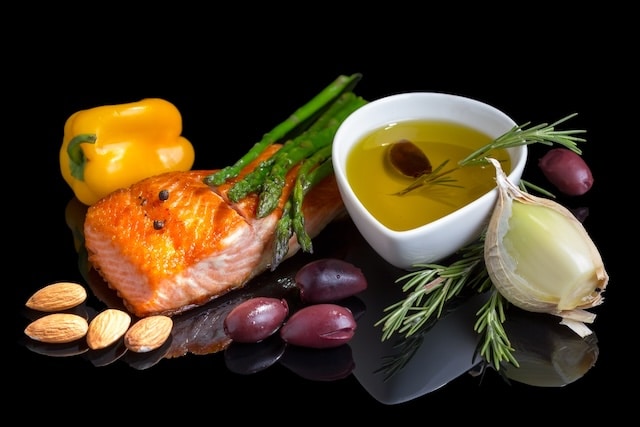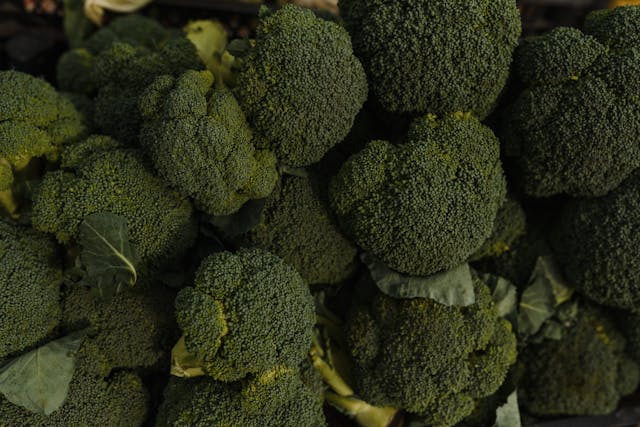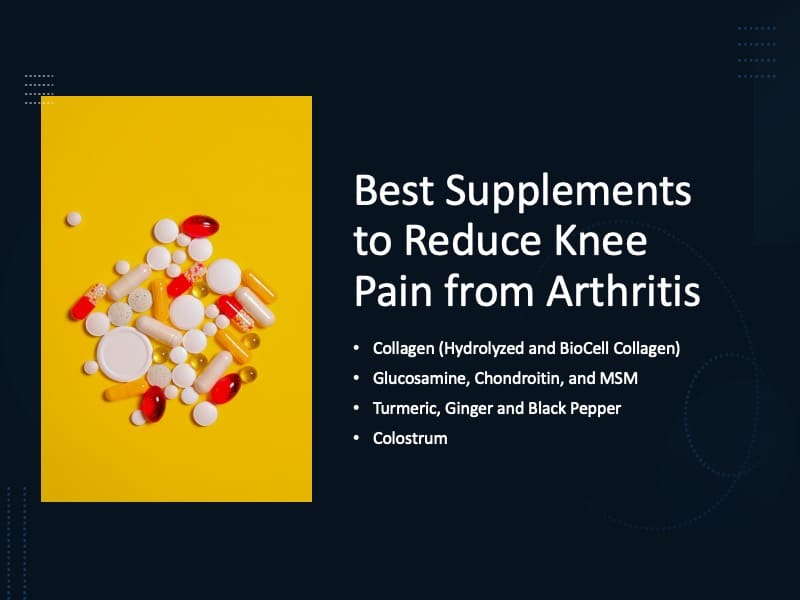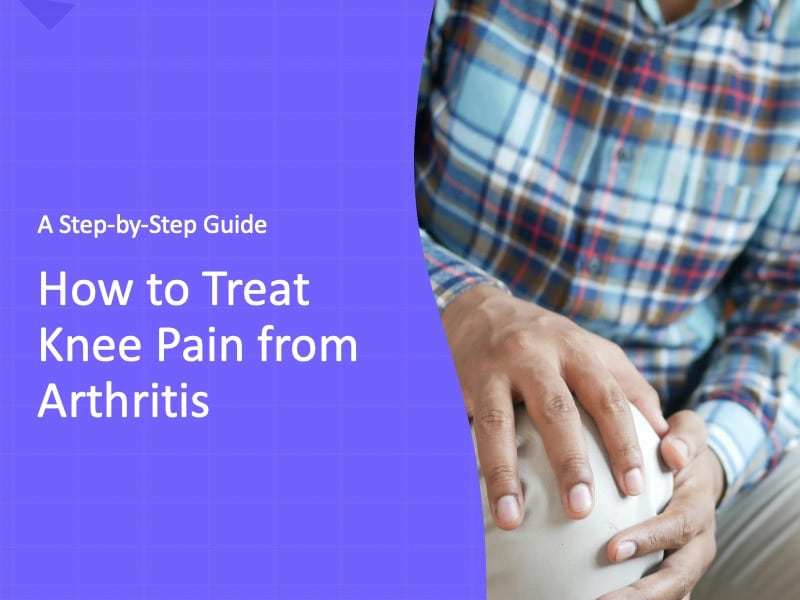How to Treat Knee Pain from Arthritis: A Step-by-Step Guide
Treating knee pain from arthritis is a complex challenge that requires a blend of pain management, supportive exercises, and tailored nutrition.
As arthritis wears down cartilage and increases joint inflammation, individuals often find their movement limited- sometimes making everyday activities difficult.
Fortunately, with the right approach, it’s possible to reduce pain, improve mobility, and even slow down the progression of joint damage.
Over the years, I’ve had my fair share of knee pain—primarily from jumper’s knee (patellar tendonitis).
While jumper’s knee and arthritis stem from different causes, they share commonalities as both are driven by overuse and wear on joint structures.
This article covers the most effective, research-backed methods for managing knee arthritis—from supplements and exercise routines to diet and pain relief strategies.
These practical solutions are designed to help individuals with arthritis regain control over their joint health and quality of life.
Whether it’s a comprehensive diet plan, a structured exercise routine, or the best supplements to address joint pain, this guide provides actionable insights to build a strong foundation for long-term knee health.
The tools I’ve gathered from both my own journey and my knowledge of arthritis-specific approaches offer a practical roadmap for long-term knee health, whether dealing with tendonitis, arthritis, or other overuse knee injuries.
What is Knee Arthritis?
Knee arthritis, primarily osteoarthritis, results from the gradual breakdown of cartilage—the soft, protective tissue covering the ends of bones in the knee joint.
This degeneration of cartilage leads to increased friction between the bones, causing pain, swelling, and inflammation.
Over time, the knee joint may lose its natural shape as bones develop growths known as bone spurs, exacerbating discomfort and restricting movement further.
Common Symptoms of Knee Arthritis
Arthritis in the knee can lead to a range of symptoms, including:
- Pain and Tenderness: Typically worsens with activity but can also be present at rest.
- Swelling and Inflammation: Caused by fluid buildup or an inflammatory response in the joint.
- Stiffness: Especially pronounced after periods of inactivity, like first thing in the morning or after sitting.
- Reduced Range of Motion: Difficulty fully bending or straightening the knee.
- Grinding Sensation: A feeling or sound of bones rubbing together due to cartilage loss.
The Role of Exercise in Managing Knee Arthritis
Contrary to the misconception that exercise exacerbates joint wear, controlled, low-impact physical activity can significantly improve joint health in those with knee arthritis.
Exercise benefits the knee joint by strengthening the surrounding muscles, particularly the quadriceps, hamstrings, and calf muscles, which collectively support joint stability and reduce load on the knee itself.
Exercise also:
- Improves Circulation: Increases blood flow to the knee, which supplies oxygen and essential nutrients while removing metabolic waste.
- Promotes Joint Lubrication: Movement helps the joint fluid, or synovial fluid, penetrate cartilage, delivering nutrients directly where they’re needed.
- Reduces Stiffness: Regular movement prevents the muscles and ligaments surrounding the knee from stiffening, making it easier to maintain mobility.
Additionally, research indicates that both high- and low-intensity exercises contribute to pain reduction, supporting the notion that consistent exercise benefits those with knee arthritis (Juhl et al., 2014).
This research supports the idea that even moderate, regular exercise can lead to significant improvements in pain management and mobility for those with knee arthritis, making exercise a cornerstone of effective arthritis care.
Best Exercises for Knee Arthritis Relief
Doctors now emphasize that not using joints enough can worsen arthritis symptoms.
Regular movement helps increase blood supply, supports joint function, and improves mental well-being by reducing stress and enhancing body confidence.
There are many, many exercises that are good for bad knees and knee pain, but these are just a few of my favorites and most effective options:
Strengthening Exercises
Terminal Knee Extensions (TKE): Terminal knee extensions are one of the simplest and best exercises for knee pain.
To perform, attach a resistance band around a sturdy object and loop it around the back of your knee. Straighten your leg slowly against the resistance, then bend slightly, keeping control.
The terminal knee extension exercise is highly effective for targeting and strengthening the quadriceps, which is crucial for knee stability. It is easily one of the best exercises for quadriceps.
Step-Ups: Stand facing a step, place one foot on the step, and follow with the other. Return the first foot to the floor and repeat for 1 minute per side (or alternating). The step-up movement strengthens the thigh muscles and can be done by holding onto a railing for balance.
Start with a low-step and progress as your knees become stronger.
Chair Sit-to-Stands: Sit on a chair with knees bent at 90 degrees, arms crossed over your chest. Stand up slowly without using your arms, then sit down. Repeat for a minute, gradually increasing repetitions over time.
Backward Walking
Backward walking on a treadmill, whether powered or manual, is an exceptional exercise for managing knee pain because it uniquely activates the quadriceps and improves joint mechanics without the high impact of forward walking or running.
By walking backward, the load shifts more toward the front of the knee, engaging the quadriceps muscles more effectively.
This focus on the quads can improve knee stability, as stronger quadriceps support the knee joint and help reduce strain on ligaments and tendons, including the patellar tendon, which is often stressed in conditions like jumper’s knee or arthritis.
Additionally, backward walking requires a heightened level of knee flexion, which enhances range of motion and gradually builds strength in a pain-free way.
For those with knee arthritis, this motion can help lubricate the joint by encouraging synovial fluid circulation, which is crucial for reducing stiffness and pain.
Unlike traditional exercises, which can put undue pressure on the knees, backward walking distributes force more evenly, helping reduce overall knee joint stress.
Even when the treadmill is powered off, backward walking requires more effort and stability, creating a highly effective, low-impact workout that strengthens stabilizing muscles around the knee and improves joint resilience.
Isometric Strengthening
Seated Leg Extensions with Mini-Band: Sit with a mini-band around your ankles in a split position (you can start without weight or add ankle weights later), extend one leg, hold for 5 seconds, and slowly lower. Repeat for each leg. This helps strengthen the quadriceps without excessive knee strain.
Balance and Coordination Exercises
Single-Leg Balance/Patrick Step: Incorporate single-leg balance into your daily routine by standing on one foot while brushing your teeth or doing simple tasks around the house.
This simple habit gradually builds stability in the knee and surrounding muscles, promoting better joint health and reducing strain on the knees.
As your balance improves, increase the challenge by standing on your tiptoes or closing your eyes, which engages deeper stabilizing muscles and enhances proprioception.
Begin on a flat, stable surface, then progress to a slightly elevated step or cushion to further strengthen your knee and ankle stability.
This exercise builds confidence in single-leg support and aids in injury prevention and knee joint resilience over time.
The Patrick Step, also known as the Peterson Step-Up, is a highly effective exercise progression for strengthening the knee joint and improving stability, particularly around the patellar tendon and quadriceps.
This exercise is especially beneficial for individuals recovering from knee pain, including patellar tendinitis or knee arthritis, as it emphasizes controlled, low-impact movement that supports knee health without excessive strain.
Low-Impact Aerobic Activities: Walking, Swimming, and Aqua Aerobics
Incorporating low-impact aerobic activities like walking, swimming, and aqua aerobics offers unique benefits for those with knee arthritis.
These low-impact aerobic activities are beneficial for knee arthritis because they encourage movement and flexibility without the strain and high impact associated with activities like running or jumping.
They allow individuals to maintain cardiovascular fitness, control body weight, and strengthen knee-supporting muscles, all of which are crucial for managing arthritis effectively.
Engaging in these exercises two to three times a week can complement strength training and stretching routines, offering a balanced, sustainable approach to arthritis management.
Walking

Walking is one of the simplest and most accessible forms of low-impact aerobic exercise.
It helps strengthen the muscles around the knee joint, particularly the quadriceps, and hamstrings, which provide stability and reduce joint load.
sWalking also promotes bone density, improving joint structure and resilience.
Research shows that individuals who walk regularly experience reduced stiffness and better joint function, as the gentle compression and decompression of cartilage improve nutrient circulation to the joint tissue.
To optimize the benefits, start with shorter sessions, like 10 to 15 minutes, on even surfaces, and gradually increase duration as tolerance builds.
Choosing the right shoes with cushioning is essential to absorb shock and prevent further joint stress.
Swimming
Swimming is often described as the ideal exercise for individuals with arthritis, as the buoyancy of water supports body weight, reducing joint impact while allowing full-range movements. Unlike land-based exercises, swimming places minimal stress on the knee joints, enabling people with arthritis to exercise with less pain.
This environment allows for various movements like kicking, fluttering, and stretching, which strengthen knee-supporting muscles without causing inflammation.
Swimming also has the advantage of building overall muscle tone, cardiovascular endurance, and flexibility, contributing to improved joint health and mobility.
Even gentle swimming, such as backstroke or a simple scissor kick, can be effective for knee arthritis, allowing for consistent exercise without joint strain.
Aqua Aerobics
Aqua aerobics (and other options like aqua cycling) takes the benefits of water a step further by incorporating resistance through water’s natural density, strengthening muscles around the knee joint.
Water resistance adds gentle pressure, engaging the muscles without forcing abrupt movements that could cause knee pain.
Aqua aerobics classes typically include movements like leg lifts, marches, and squats, which can improve stability, flexibility, and strength in a controlled, low-impact environment.
An additional benefit of aqua aerobics is that water’s hydrostatic pressure aids circulation and reduces swelling, a common symptom of knee arthritis.
The cooling effect of water can also help to alleviate any residual joint inflammation, making it ideal for longer, more sustained activity that might not be possible on land.
Mobility Exercises
Mobility exercises are incredibly valuable for managing arthritis, offering improved joint movement and sustained pain relief without overstraining the joints.
Unlike static stretching, which targets flexibility by holding muscles in a lengthened position, mobility work involves controlled, dynamic movements that aim to increase the functional range of motion in a joint.
This approach can be particularly beneficial for arthritis, as it promotes circulation, synovial fluid production (which helps “lubricate” the joints), and a stronger foundation for everyday movements.
Many mobility exercises are effective for arthritis, including techniques like dynamic joint rotations and gentle resistance band movements.
However, starting any mobility routine requires careful consideration; pushing too quickly into more intense exercises can increase the risk of overuse or exacerbate arthritis symptoms.
Having professional guidance—whether from a physical therapist or personal trainer—is advisable to ensure proper technique and avoid strain, especially when first beginning.
Mobility exercises, in contrast to static stretches, provide more sustainable benefits by strengthening the muscles and tendons around the joint.
This helps reduce the repetitive stress on arthritic areas, offering long-term pain relief and functional improvements.
Consistent, mindful mobility work can ultimately contribute to better posture, less stiffness, and increased ease of movement, allowing individuals with arthritis to move with greater confidence and reduced discomfort in daily activities.
Here is a very good video to help you get started with mobility exercises for knee pain from arthritis:
Anti-Inflammatory Diet for Knee Arthritis

For individuals with knee arthritis, incorporating an anti-inflammatory diet can reduce pain, support joint health, and improve overall mobility.
By choosing foods that actively lower inflammation while avoiding those that can trigger it, this dietary approach targets the root causes of joint discomfort.
A study published in Arthritis Care & Research (2017) examined the effects of an anti-inflammatory diet on arthritis symptoms, analyzing the dietary habits of over 4,000 individuals with knee osteoarthritis.
The research found that those who followed a Mediterranean-style diet, rich in omega-3s, vegetables, whole grains, and nuts, experienced a marked reduction in knee pain and improved joint function compared to those who consumed a diet high in processed foods, refined sugars, and red meat.
The study also observed that consistent adherence to anti-inflammatory foods correlated with lower levels of CRP and other inflammatory markers, suggesting a direct link between diet and reduced inflammation in arthritis patients.
This evidence highlights the significance of dietary choices in managing knee arthritis.
By consistently incorporating anti-inflammatory foods and avoiding pro-inflammatory ones, individuals may reduce pain, improve joint function, and potentially slow disease progression.
Foods That Help Reduce Inflammation

Each of these foods offers unique compounds that work together to lower inflammation, enhance cartilage function, and provide long-lasting joint support.
By incorporating nutrient-rich options like omega-3 fatty acids, leafy greens, and whole grains, individuals with knee arthritis can positively impact their joint health and improve mobility.
Omega-3 Rich Foods
Omega-3 fatty acids, abundant in foods like salmon, mackerel, flaxseeds, and walnuts, are powerful anti-inflammatory agents.
Omega-3s can suppress the body’s inflammatory responses, reducing joint pain and stiffness associated with arthritis.
Regular intake of omega-3s has been shown to reduce inflammatory markers in the body, such as C-reactive protein (CRP), which are often elevated in individuals with arthritis.
Leafy Greens and Cruciferous Vegetables
Vegetables like broccoli, Brussels sprouts, spinach, and kale are packed with antioxidants, vitamins, and minerals that combat inflammation at the cellular level.
In particular, sulforaphane, a compound in broccoli and other cruciferous vegetables, has shown promise in inhibiting enzymes that cause joint degradation in arthritis.
Leafy greens are also high in vitamin K, which supports bone health and may further protect the knee joint.
Nuts and Seeds
Almonds, chia seeds, and flaxseeds are excellent sources of healthy fats, protein, and fiber, all of which help in managing inflammation.
These foods also contain antioxidants like vitamin E, which can reduce the inflammatory response in the body.
Additionally, chia and flaxseeds offer plant-based omega-3s, which further support joint health.
High-Fiber Grains
High-fiber whole grains such as brown rice, quinoa, oats, and barley have a low glycemic index and are high in fiber, which helps control blood sugar levels.
Unstable blood sugar can contribute to systemic inflammation, exacerbating arthritis symptoms.
The prebiotic fiber in whole grains also promotes a healthy gut microbiome, which is increasingly recognized for its role in regulating inflammation.
Foods to Limit

Certain foods can worsen inflammation, aggravating symptoms of knee arthritis and contributing to increased joint pain and stiffness. Limiting or avoiding these foods can make a significant difference in managing arthritis symptoms and supporting joint health.
Reducing these foods in your diet can minimize inflammatory flare-ups and help create a more supportive environment for pain relief and mobility improvement.
Sugary Foods and Drinks
Added sugars in processed foods, sweets, and sugary drinks contribute to the release of inflammatory cytokines, small proteins that can worsen arthritis pain and swelling.
High sugar intake has been linked to increased levels of CRP, a marker of inflammation that can directly affect joint health.
Refined Carbohydrates
Foods made from refined grains, like white bread, pastries, and certain processed cereals, can spike blood sugar and lead to insulin resistance, increasing inflammation over time.
Refined carbohydrates also lack the fiber and nutrient density of whole grains, offering no anti-inflammatory benefits.
Alcohol
Alcohol consumption can influence the risk and severity of rheumatoid arthritis (RA), particularly among women. Research from a large Chinese cohort study found that higher levels of alcohol intake were associated with an increased risk of RA, especially in women.
Specifically, each 10-gram increase in daily alcohol consumption significantly raised RA risk in women, while this association was less pronounced in men.
Heavy alcohol intake can elevate inflammatory markers, which may worsen arthritis symptoms and contribute to joint pain and stiffness.
Given these findings, limiting alcohol may help reduce inflammation and manage arthritis symptoms more effectively, especially for women.
Best Supplements to Reduce Knee Pain from Arthritis

For individuals managing knee arthritis, supplements can play a supportive role in reducing inflammation, enhancing joint health, and potentially alleviating pain. Here are some of the best supplements with evidence-based benefits for joint function and knee pain relief.
Collagen (Hydrolyzed and BioCell Collagen)
Collagen, a key protein in cartilage, ligaments, and tendons, supports joint structure and can help improve mobility and reduce joint pain over time.
Hydrolyzed collagen is broken down into smaller peptides, making it easier for the body to absorb and utilize in joint repair.
BioCell Collagen, a specific blend of hydrolyzed collagen, hyaluronic acid, and chondroitin sulfate, has been shown in studies to support joint cartilage and reduce knee pain significantly.
Using collagen supplements regularly can help restore cartilage density and improve joint comfort, especially for individuals with osteoarthritis.
Hydrolyzed collagen supplements are effective for many situations, but I recommend BioCell Collagen as a primary option for knee pain from arthritis.
I’ve used NOW Foods BioCell Collagen supplements throughout my career to support my joints, and I believe it is a great, consistent option for people with knee pain.
Last update on 2025-07-14 / This article includes affiliate links/Images via Amazon Product Advertising API. I may earn commissions on purchases made through these links.
Glucosamine, Chondroitin, and MSM
Glucosamine and chondroitin are natural compounds found in cartilage that aid in joint lubrication, shock absorption, and cartilage repair.
These supplements have been widely used to reduce pain and improve mobility in knee osteoarthritis, as they help slow cartilage breakdown and promote joint health.
MSM (Methylsulfonylmethane), often combined with glucosamine and chondroitin, has anti-inflammatory properties that can help reduce swelling and pain in arthritic joints. Together, these three compounds work synergistically to reduce symptoms and support joint structure.
The Osteo Bi-Flex Triple Strength Supplement is an excellent option for managing joint pain associated with arthritis, especially in the knees.
This supplement combines three key ingredients for joint health: Glucosamine, Chondroitin, and MSM (Methylsulfonylmethane).
Glucosamine helps to protect cartilage, reducing joint stiffness and promoting smoother movement.
Chondroitin supports joint lubrication, which enhances flexibility and reduces wear on the joints, while MSM, known for its anti-inflammatory properties, further alleviates pain and reduces joint swelling.
One of the standout features of Osteo Bi-Flex Triple Strength is its high potency, offering 1500 mg of glucosamine and 1500 mg of MSM per serving, which is beneficial for those with chronic joint pain.
This supplement also includes Vitamin C, which aids in collagen production, a critical component for joint repair and resilience.
Osteo Bi-Flex’s “Triple Strength” label ensures that it provides these ingredients in effective doses, making it a strong choice for anyone looking to support joint health proactively.
Given the positive reviews and reliable formulation, Osteo Bi-Flex Triple Strength is highly regarded for helping reduce stiffness and improve mobility for people with arthritis.
Last update on 2025-07-14 / This article includes affiliate links/Images via Amazon Product Advertising API. I may earn commissions on purchases made through these links.
Turmeric, Ginger and Black Pepper
Turmeric contains curcumin, a powerful anti-inflammatory compound that has been shown to reduce pain and inflammation in various types of arthritis. Combined with ginger, which also has anti-inflammatory and analgesic properties, this duo can help reduce joint stiffness and pain.
Regular supplementation with turmeric and ginger can improve knee function and mobility, making them ideal additions for long-term arthritis management.
Look for turmeric supplements that contain black pepper or piperine, as these enhance curcumin absorption.
The Horbaach Turmeric and Ginger Supplement is an ideal blend for those seeking natural support for knee pain and inflammation associated with arthritis. This supplement combines turmeric—known for its high curcumin content, which has strong anti-inflammatory properties—with ginger, a root traditionally recognized for reducing joint pain and stiffness.
Together, these ingredients can help lower inflammation, potentially easing discomfort from arthritis.
This formulation is enhanced with black pepper extract (piperine) to improve absorption, ensuring that the body effectively utilizes the curcumin in turmeric.
At 3000 mg per serving, Horbaach’s softgels provide a potent dose for those looking for a natural alternative to manage joint pain and reduce inflammation.
Additionally, these softgels are non-GMO, gluten-free, and contain no artificial preservatives, making them suitable for a wide range of dietary preferences.
Last update on 2025-07-14 / This article includes affiliate links/Images via Amazon Product Advertising API. I may earn commissions on purchases made through these links.
Colostrum
Colostrum, the nutrient-rich first milk produced by mammals, contains growth factors, antibodies, and anti-inflammatory compounds that support joint health and overall immunity.
Colostrum has been shown to improve gut health, which can be beneficial for those with arthritis, as an optimized gut microbiome can reduce systemic inflammation and improve nutrient absorption.
Additionally, the growth factors in colostrum may help support cartilage repair and reduce inflammation, making it a valuable supplement for knee arthritis management.
In my opinion, the best colostrum supplement to start with is Force Factor Colostrum. Force Factor’s formulation is distinguished by its purity and bioavailability—key factors in maximizing colostrum’s potential benefits.
It provides a clean and potent source of bovine colostrum, free from unnecessary additives.
This product is also made to meet high standards for safety and effectiveness, which appeals to those seeking a reliable source for a natural supplement that supports both immunity and joint health.
Last update on 2025-07-15 / This article includes affiliate links/Images via Amazon Product Advertising API. I may earn commissions on purchases made through these links.
Lifestyle Changes to Support Knee Health
Making targeted lifestyle changes can play a crucial role in managing knee arthritis, as they help reduce joint strain, alleviate pain, and improve mobility. Simple adjustments, such as weight management, proper footwear, and prioritizing rest, can make a significant difference.
By incorporating these changes consistently, individuals with knee arthritis can support their knee health more effectively and reduce the risk of worsening symptoms.
Weight Management
Excess body weight puts added stress on knee joints, amplifying pain and accelerating cartilage wear. Research shows that even modest weight loss—just 5% of total body weight—can improve knee function, reduce pain, and enhance mobility.
Aim for gradual weight loss by making sustainable dietary adjustments that emphasize high-fiber, nutrient-dense foods such as fruits, vegetables, whole grains, and lean proteins.
These foods help control appetite, stabilize blood sugar, and reduce inflammation. Regular low-impact exercise, such as walking or swimming, can also aid in weight management without placing excess strain on the knees.
Supportive Footwear
Footwear plays a vital role in absorbing impact and stabilizing knee joints during movement. Shoes with shock-absorbing soles and good arch support help reduce pressure on the knees, especially during activities like walking.
Look for well-cushioned athletic shoes designed to absorb shock, as they help distribute weight more evenly and minimize knee discomfort.
Avoid high heels, tight shoes, and footwear that lack proper support, as these can cause misalignment in the knee joint, leading to increased pain and strain.
Consistent Rest
Quality sleep can be a powerful tool in managing knee arthritis pain.
Research from the Multicenter Osteoarthritis Study found that better sleep quality is associated with lower odds of worsening knee pain, particularly for individuals who experience widespread pain across multiple joints.
Poor sleep is linked to increased systemic inflammation, which can worsen joint pain and stiffness.
In contrast, restorative sleep may reduce inflammation and improve the body’s ability to manage pain, making it a crucial factor for those managing arthritis.
Prioritizing consistent, restful sleep could, therefore, contribute to improved knee function and reduced discomfort for those with arthritis.
Pain Management Techniques for Knee Arthritis
Managing knee arthritis effectively often requires a multifaceted approach to alleviate pain and improve joint mobility. For many, the combination of therapies such as heat and cold applications, relaxation techniques, and self-care practices can make a noticeable difference.
By adopting these pain management techniques, individuals with knee arthritis can support their knee health, reduce discomfort, and enhance their quality of life.
Here are some targeted methods to help manage arthritis-related knee pain.
Heat and Cold Therapy
Alternating between hot and cold therapy can provide powerful relief for knee arthritis.
Applying heat packs relaxes muscles, promotes blood flow, and alleviates stiffness around the joint. Heat is particularly useful before activities, as it prepares the knee for movement.
Cold packs, on the other hand, help reduce swelling and numb pain.
Applying ice after activity or when inflammation flares up can help keep swelling under control.
For optimal results, apply heat for 15–20 minutes and cold for 10–15 minutes as needed, ensuring there is a cloth between the skin and the pack to prevent burns or frostbite.
If you’re willing to spend the money, the TheraBody RecoveryTherm Knee is an excellent tool for hot and cold therapy for knee pain:
Last update on 2025-07-14 / This article includes affiliate links/Images via Amazon Product Advertising API. I may earn commissions on purchases made through these links.
Relaxation Techniques
Pain from arthritis can be intensified by stress, making relaxation techniques valuable for pain management.
Practices like mindfulness meditation, progressive muscle relaxation, and deep breathing exercises help shift focus from pain, reduce anxiety, and lower stress levels.
Progressive muscle relaxation involves tensing and then relaxing each muscle group, from toes to head, which can relieve tension throughout the body, including around the knee.
Mindfulness meditation, even for just 10–15 minutes daily, has been shown to improve pain tolerance by promoting a calm mental state.
The Calm app is an excellent tool for incorporating mindfulness and relaxation techniques into daily routines, especially for those managing chronic pain from arthritis.
By offering guided sessions in meditation, progressive muscle relaxation, and breathing exercises, Calm helps reduce stress, which can otherwise intensify pain perception.
These practices create a mental shift, focusing the mind away from pain and lowering anxiety levels associated with chronic conditions.
Self-Myofascial Massage
Self-myofascial massage, such as foam rolling, is another beneficial technique for managing knee arthritis pain.
This practice targets the fascia—the connective tissue surrounding muscles—and helps release tightness and improve circulation.
By gently massaging the quadriceps, hamstrings, and calf muscles, you can reduce tension around the knee joint, making movement easier and less painful.
Foam rollers, massage balls, percussive massage guns, and other self-massage tools can be effective for myofascial release.
Apply moderate pressure and roll slowly over each muscle group, focusing on any tight or tender spots for 30–60 seconds each.
Regular self-massage can increase flexibility, reduce inflammation, and improve blood flow, offering both immediate relief and long-term benefits for knee arthritis.
For knee pain, the Roll Recovery R8 is a uniquely beneficial tool I have used over the years because it is excellent for the quads, especially the VMO.
Last update on 2025-07-14 / This article includes affiliate links/Images via Amazon Product Advertising API. I may earn commissions on purchases made through these links.
DIY Cupping Therapy
DIY cupping therapy, a form of myofascial release, may also provide relief for knee arthritis when used safely. Cupping works by applying suction to the skin, which increases blood flow and can help reduce stiffness and inflammation.
For DIY cupping, silicone or rubber cups are commonly used as they allow easy adjustment of pressure and can be moved along the skin to target specific areas.
By gently sliding the cup around the muscles supporting the knee (like the quads and hamstrings), individuals can promote relaxation in these muscles, which in turn reduces strain on the knee joint.
Always avoid placing cups directly on inflamed areas and limit cupping sessions to 5–10 minutes, once or twice a week.
Inexpensive silicone cupping devices work well, but if you want a more effective experience, the TheraBody TheraCup offers additional health and vibration for significant benefits:
Last update on 2025-07-14 / This article includes affiliate links/Images via Amazon Product Advertising API. I may earn commissions on purchases made through these links.
Final Thoughts: Long-Term Knee Pain Management for People with Arthritis
Managing knee arthritis is a long-term journey that requires a proactive and balanced approach. Combining regular, low-impact exercise with strengthening routines, an anti-inflammatory diet, and pain management techniques can greatly improve knee function and reduce discomfort over time.
Tools like mindfulness apps, supportive footwear, and lifestyle changes such as weight management are small adjustments that add up to significant relief and improved quality of life.
Consistency and patience are key, as gradual changes can bring the best results without overstressing the joint.
Always consult with healthcare providers before starting new treatments or exercise routines, especially to tailor approaches for individual needs.
By embracing a holistic approach, individuals with knee arthritis can stay active, improve mobility, and better manage their pain, creating a sustainable pathway to long-term knee health.
This website does not provide medical advice. This website site does contain affiliate links, and purchases may earn a commission.
Read my Medical Disclaimer, Review Disclaimer, and Publishing Policies for more details. Use of this site indicates acceptance of these terms.










